Top 10 Tibetan Monasteries
- Meo
- Last Updated : 05/20/2025
To immerse in Tibetan culture and gain deep knowledge about Tibetan Buddhism, the best way is to visit Tibetan monasteries. The Tibetan way of life once revolved around monasteries. Monasteries before were centers of learning, right now, it’s still the haven sites where millions of Tibetan people express their wishes and receive happiness from Buddha. So you will find that the brief here is the air, and also the spiritual home of Tibetan Buddhists. With a unique religious background, Tibet is home to more than 6,000 monasteries and temples, most of which stand on the mountaintops.
We’ve listed 10 of the most visited Tibetan Buddhist monasteries, their marvelous structural styles and precious collections of religious artworks will feast your eye. You don’t need to be a religious person to appreciate the unique spiritual experience and atmosphere of these monasteries.
Content Preview
1. Jokhang Temple
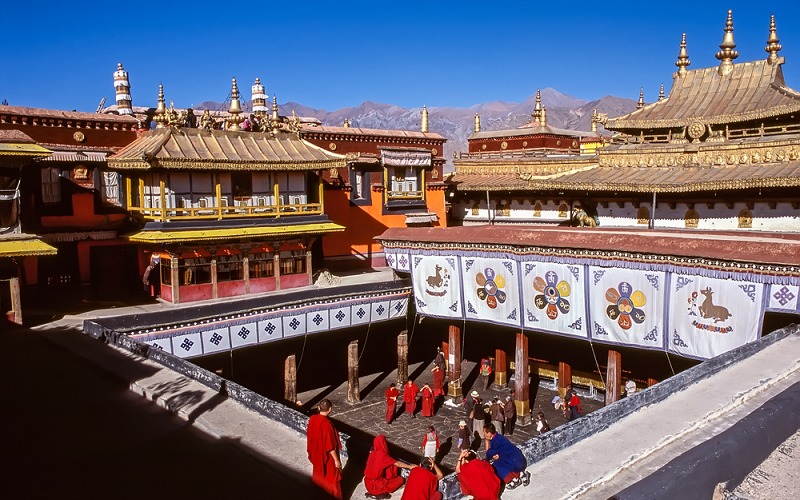
The Jokhang Temple, also known as the Qolkang Monastery, maintained by the Gelug School, is located at the very heart of the city of Lhasa, the capital of Tibet. Because of this temple, Lhasa is called the holy city. This temple houses a precious statue of Sakyamuni at the age of 12, which is recognized as the holiest item in Tibet. This holy statue was brought by Princess Wencheng from the Tang Dynasty, and now it’s enshrined in the main hall of Jokhang Temple.
This temple was said to be founded by King Songtsen Gampo and was believed to be built for the King's Two brides. The oldest section of the temple was built in 652 AD. During the flowing years, Jokhang Temple was rebuilt and renovated several times and reached today’s scale in the Ming Dynasty. Its architectural style is a blend of Tibetan, Indian, and Nepalese designs.
With more than 1300 years of history, Jokhang Temple is a sovereign in Tibetan Buddhism and accepts all types of worshippers from the different sects of Buddhism. It’s a must-see place for every traveler who visits Tibet. In Tibetan, there’s a saying that Jokhang Temple comes first, then Lhasa city. Therefore you can see among Tibetans, Jokhang Temple is outranked anywhere else in Lhasa, including Potala Palace, which is not a monastery but a residence of Dalai Lama.
For photographers, the best time to shoot this temple is in the morning, when the golden roofs shine under sunlight.
√ 4 Days Lhasa City Essential Group Tour
2. Drepung Monastery
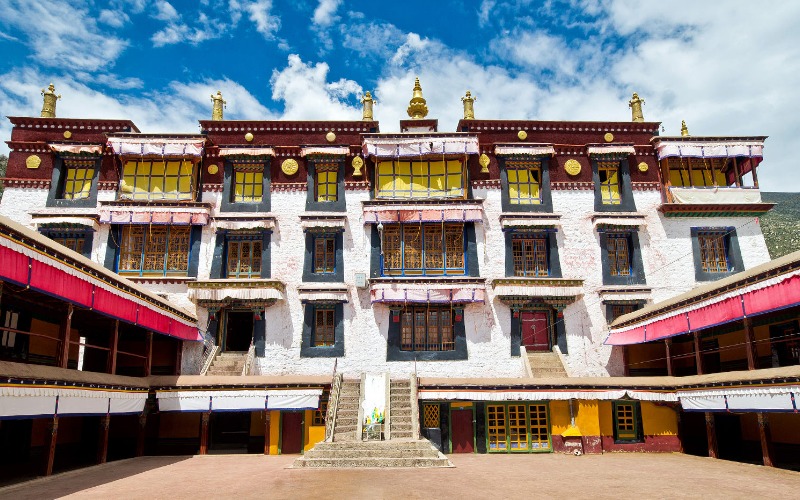
Stands in the western suburb of Lhasa, Drepung Monastery was considered once to be the largest monastery, not only in Tibet but also in the rest of the world. Along with "Sera Monastery" and “Ganden Monastery”, they are also famous as the “Great Three Gelug monasteries of Lhasa”.
This large monastery covers an area of about 200,000 square meters and houses 10,000 monks during its peak period. It was built in 1416 by the founder of Gelug Sect, Jamyang Choje, and played a role as not only a monastery but also a college. This monastery is now a center of learning and is one of the primary universities of Buddhist monks. You will still find this monastery bustling with many activities at present.
When you tour the Drepung Monastery, you may get to see the 26-meter gold Maitreya Buddha. Especially during the Shoton Festival, which will be celebrated on July 1st of the Tibetan calendar, thousands of people come to Drepung Monastery to worship a giant thangka of Buddha. It’s also the best time for travelers to visit Drepung Monastery.
√ 4 Days Lhasa Urban & Suburb Private Tour
3. Sera Monastery
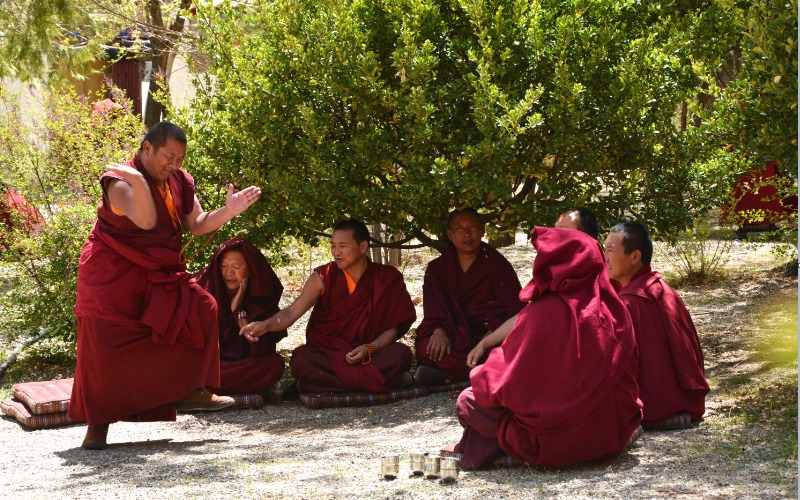
Located in the northern suburb of Lhasa, Sera Monastery is renowned as the most beautiful monastery. It is one of the great three Gelug monasteries. Its name, “Sera”, means “wild rose” in Tibetan literally. The legend goes that when the wild roses bloomed and covered the hill behind the monastery during its construction.
The Sera Monastery is a complex of structures. It features a great Assembly Hall along with other great three colleges. It was founded by Jamchen Chojey in the year 1419, just five years after the founding of the Drepung Monastery. This monastery suffered severe damages in 1959 and has been renovated since then. One of the best things to do when you visit Sera Monastery is to witness the highly anticipated debate sessions of monks in the afternoon. You’re suggested to visit it in the afternoon from Monday to Saturday since monks in traditional red robes will debate about Buddhism in the courtyard during that period.
√ 4 Days Lhasa City Essential Group Tour
4. Ganden Monastery
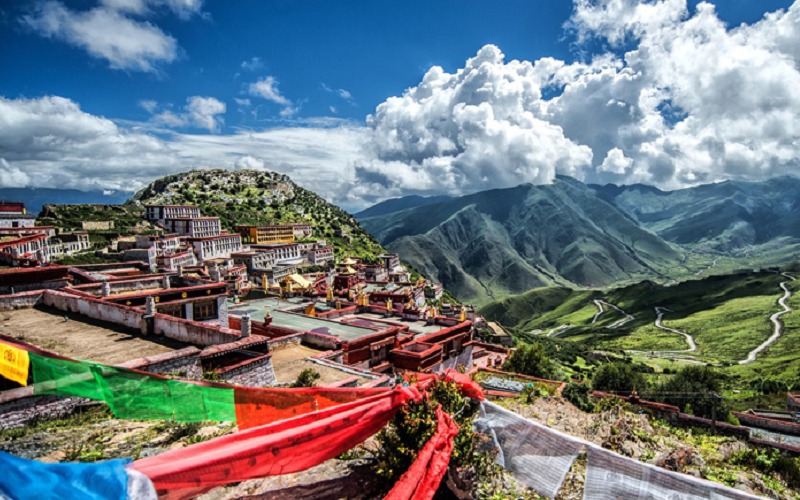
This monastery is located some 40 kilometers northeast of Lhasa. It is perched on a natural hilly amphitheater. The Ganden Monastery or Gaden Monastery belongs to the three great Tibetan university monasteries. The full name of this temple is “Ganden Langerin”. Ganden is from the pronunciation of Tibetan, which means “lead to the sky”. This is the world that Buddha Maitreya will teach in the future. The monks of Gandan Temple worship "Pure Land".
This monastery was founded in the year 1409 by the founder of the Gelug Sec—Je Tsongkhapa Lozang-dragpa. He died in this monastery and his body was entombed by his disciples in a gold and silver encrusted tomb. Its main temple features large statues and three-dimensional mandalas. Unfortunately, this monastery was destroyed in 1959 and has been rebuilt partially.
For hundreds of years, the successors to the seat of Tsongkhapa, Gandan Chiba, leader of the Gelug sect lived here. The temple also preserves more than ninety stupa towers of the successive Gandan Chibas and contains many cultural relics and crafts since the Ming Dynasty.
√ 5 Days Lhasa & Ganden Monastery Group Tour
5. Samye Monastery
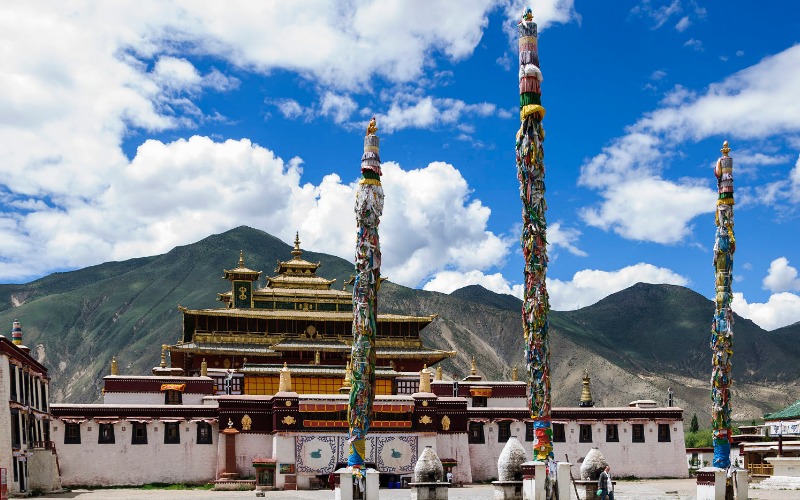
Samye Monastery was built by King Trisong Detsen in the 8th century and has been in existence for more than 1,200 years. It’s regarded as the first Buddhist monastery (Gompa) in Tibet. It is located in central Tibet, in the Mchms Phy Valley, south of the city of Lhasa and next to the Hapori Mountain of the Yarlung Valley.
It has a unique architectural design patterned after a giant mandala—a geometric configuration of the universe. The main temple, positioned at the center of the monastery, represents Mount Meru and the other buildings stand at the main temple's cardinal points and corners.
This monastery is referred to as the Temple of Unchanging Spontaneous Presence. It also played a critical role in the history of Tibet. This monastery was believed to be constructed between 787 and 791 under the guidance of King Trison Detsen. It was completed in 1476. The Samye pillar and the Samye bell bear remarkable inscriptions that show the records of the building of the temple and the bell.
√ 5 Days Lhasa & Samye Monastery Tour
6. Tashilhunpo Monastery
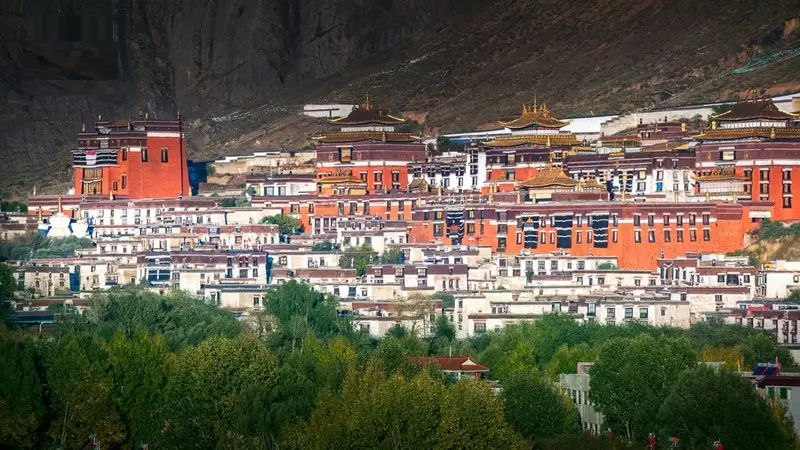
The Tashilhunpo Monastery is a historical and cultural site in Shigatse. Founded in 1447, it's famous for being the home of the Panchen Lama—the second-highest ranking in the Gelug Sect — who made this monastery his traditional seat. This monastery is situated on a hill at the very center of the city and covers an area of 150,000 square meters. If you visit this monastery, you can join the pilgrims who circumambulate the monastery on the sacred path outside its walls.
The Tashilhunpo Monastery is noteworthy for the largest statue of the Future Buddha or Maitreya in China. Moreover, the trip to Tashilhunpo Monastery is usually included in most Lhasa-Shigatse tours. You will surely find this monastery if you go to Shigatse.
√ 6 Days Lhasa Gyantse Shigatse Group Tour
7. Rongbuk Monastery
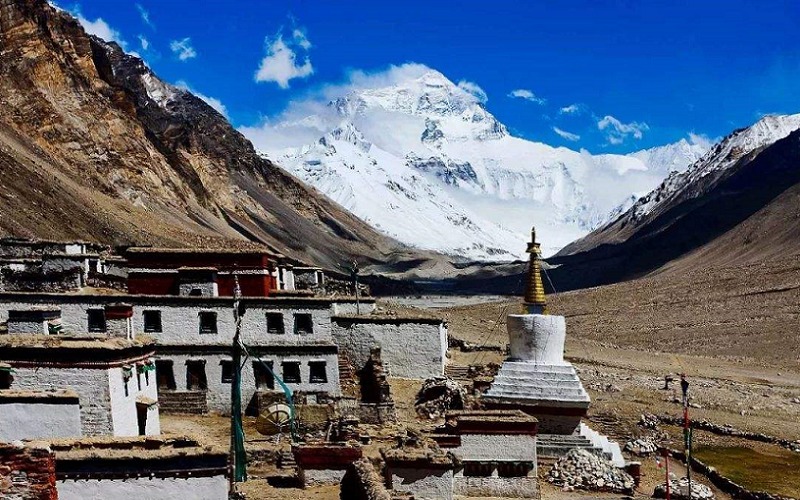
Rongbuk Monastery is famous as the highest monastery in the world, with an elevation of 4,980 meters above sea level, near the north side of Mount Everest, at Dzakar Chu Valley's end. It was an area for meditation, and a Lama founded this monastery in 1902. Rongbuk Monastery was destroyed during the 1960s and was renovated in 1983.
This monastery is a very significant site for pilgrims. Moreover, this monastery is regularly visited by expeditionary teams of climbers who attempt to scale the summit of Mount Everest. It is accessible by road from the Friendship Highway. So, if you’re going to visit the base camp, you will surely get to visit this monastery.
The Rongbuk Monastery is a unique monastery because it houses both nuns and monks under its roof. It is also the best platform for those who want to get a glimpse of the highest mountain in the world—Mount Everest. During the Saga Dawa Festival, on the 15th day of Tibetan Calendar's fourth month, there is usually a big celebration in this monastery.
√ 8 Days Lhasa Gyantse Shigatse Mt. Everest Group Tour
8. Sakya Monastery
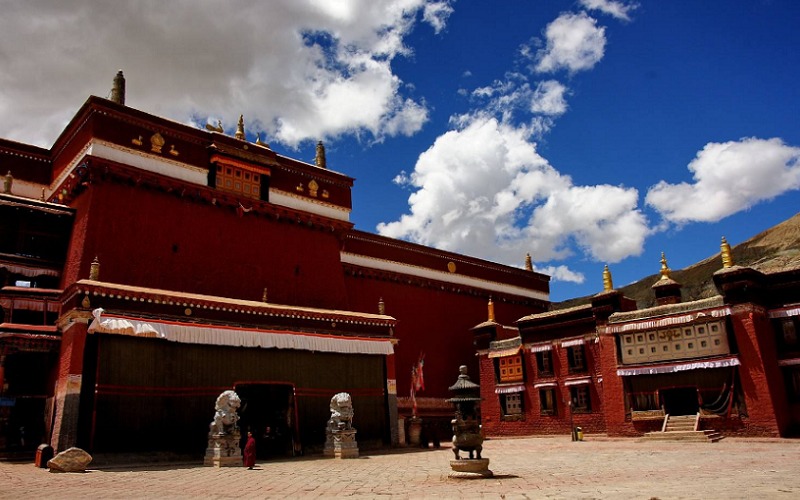
Sakya Monastery is also located in Sakya County, Shigatse. Sakya Monastery, whose name means “white earth” in Tibetan, is the primary monastery of the Sakya sect of Buddhism. It was constructed in the 11th century and its site is believed to be the site where Atiśa had a very important vision.
The Sakya Monastery contains various thangka paintings along with sacred statues. There, you will also find the stupa that has the remains of Khon khonchong Gyalpo, its founder. The great thing about the Sakya Monastery is that it harbors more than 40,000 books and thousands of sacred Buddhist scriptures, as well as thousands of folders and scrolls. It also has the world's largest scripture called “Burde Gyaimalung.” This huge sacred scripture measures about 6-feet long, 2-feet thick, and 4-feet wide. And if you would try to weigh it, you would surely be astounded by its weight because it weighs around 500 kilograms.
√ 7 Days Lhasa Shigatse Everest Base Camp Sakya Tour
9. The Pelkor Monastery
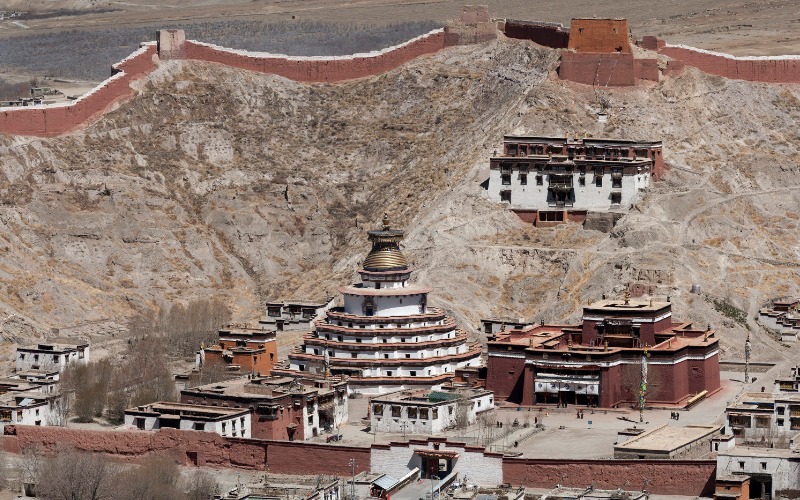
The Pelkor Monastery, also known as the Palco Chode Monastery or Shekar Gyantse, is the primary monastery in the Valley of Nyangchu River. It is also a complex consisting of various structures just like that of the Sera Monastery. It is noteworthy for its famous Kumbum—a multi-storied aggregate of chapels that contain one hundred thousand holy images. This Kumbum is considered the largest in Tibet and is remarkable for its 108 chapels on its several floors. This monastery is also noted for its famous Dzong or fort.
The history of Pelkor Monastery dates back to the ninth century, but most structures in the complex were built during the 15th century. Unfortunately, British soldiers attacked and damaged the town and the monastery in 1904, but most damages were later restored, though the bullet holes from that attack remain on the walls of the monastery as grim reminders of that attack.
In your tour of this monastery, you will surely get to see the great Kumbum, along with the famous Dzong. Moreover, a visit to this monastery is usually included in any Mt.Everest and Mt.Kailash Tour.
√ 8 Days Lhasa Gyantse Shigatse Mt. Everest Group Tour
10. The Reting Monastery
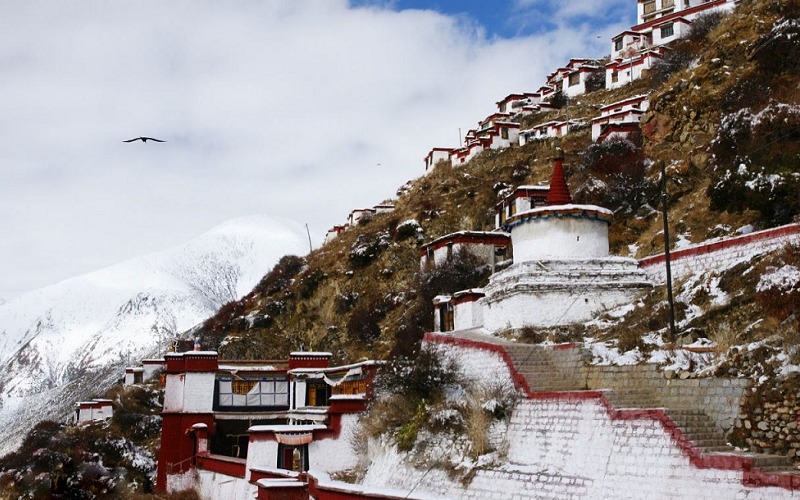
The Reting Monastery was established by Dromton—a chief disciple of Atiśa—in the year 1057. It is located at the Reting Tsangpo Valley, north of Lhasa. It is the seat of Tibetan Buddhism's Kadam lineage. This monastery is backed by over 900 years of Buddhism history.
The Reting Monastery is situated in a National Park that is known for its very dense cypress. If you would visit this monastery, you would surely enjoy a deep feeling of tranquility as you behold the picturesque landscape surrounding it. Aside from the monastery’s surrounding natural scenery, you will also find several within the monastery’s compound some ancient stupas and other historical relics.
Email response within 0.5~24 hours.


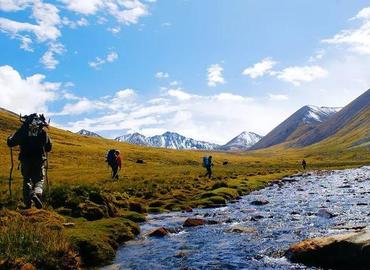
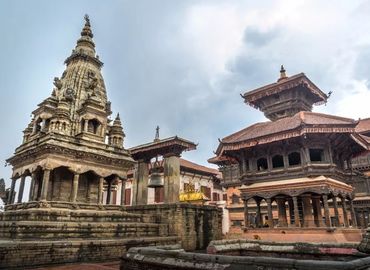
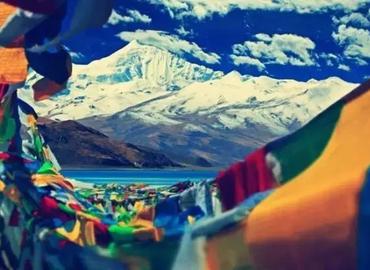
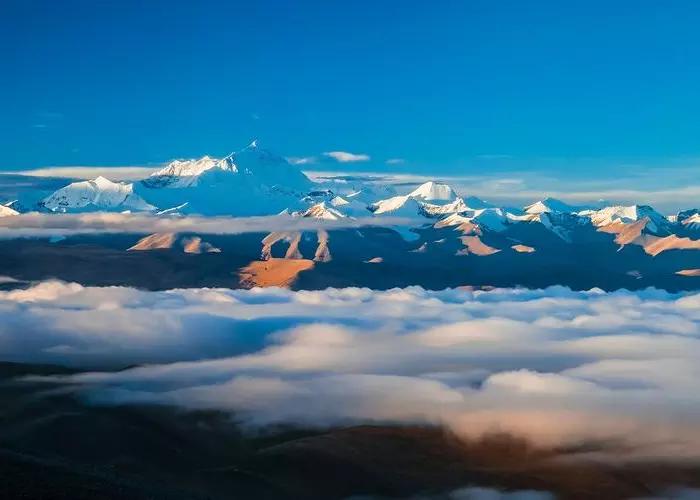

Typically Asked Questions from Our Clients
Asked by Sofi***
Hello dear friends,
I heard about the Rezhen Monastery - can you tell me where that place is?
Dear Sofie****,
Rezhen Monastery is located in Tanggu Township, Linzhou County, 240 kilometers north of Lhasa. It's the first monastery of Kadampa and now it's a monastery of Gelugpa.